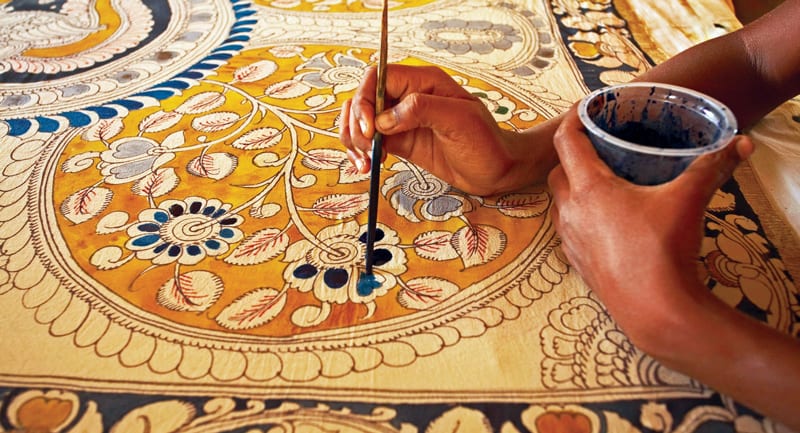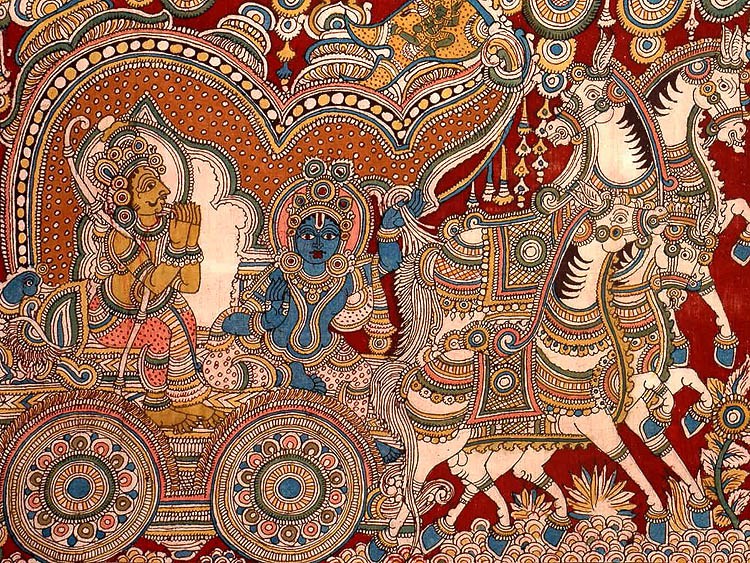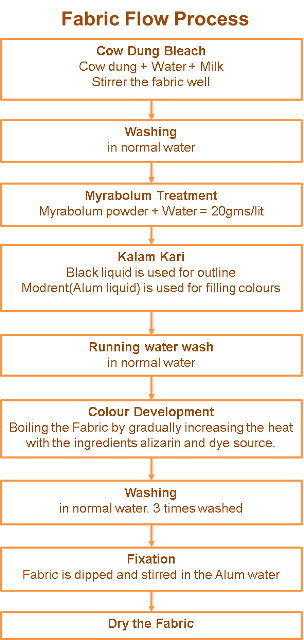Arts & Culture
Origin of Kalamkari Paintings!

Kalamkari is a 3000-year-old art form practiced in Andhra Pradesh and Telangana. It is a highly popular art form in which hand and block printing are used for making narrative scrolls and panels. The legacy of the ancient form of art has been passed on from generation to generation.

The most eminent Kalamkari craft evolved with the patronage of the Mughals and the Golconda sultanate. Kalamkari literally means a form of painting the cotton fabrics with a kalam i.e. pen, made from a sharp and pointed bamboo nibbed applicator that regulates the flow of color on the fabric.
Kalamkari Art Styles
In India, there are two unique styles of kalamkari art, namely, Srikalahasti and the Machilipatnam style. The Srikalahasti style of Kalamkari, in which the pen or the “kalam” is used for freehand drawing and filling in the colors, is a complete handwork art. Machilipatnam style of Kalamkari craft involves vegetable-dyed block-painting of a fabric. It was registered as one of the geographical indications from Andhra Pradesh, under the handicraft goods by Geographical Indications of Goods (Registration and Protection) Act, 1999.

The Kalamkari art form specifically depicts epics tales from Hindu mythology such as the Ramayana or Mahabharata. It also depicts Buddha and Buddhist art forms. Additionally, the kalamkari patterns include floral motifs, animal forms, and the mehrab designs on textiles. Kalamkari art primarily involves earthy colors such as indigo, green, rust, black and mustard.
The Process of Art Painting
The process of kalamkari painting is very slow and dynamic. It goes through a process of resist – dyeing and hand printing. There are several treatments involved before and after the painting are finished.

The colors change depending on the treatment of cloth and quality of the mordant. Every step in the process is done and with perfection.
Kalamkari in Modern Era
Kalamkari paintings have a blooming market in and outside of India. Today, the kalamkari art for sale is available in leading exhibitions that display and promote Indian handicrafts. In modern times the handwork is replaced by digital.

The art has updated digitally to fit in the digital era, where new types and advance techniques are being introduced and the digital files of kalamkari are being introduced widely all over the regions of India and Iran (Persia).
The Etymology behind the Great Art Form
Historically, Kalamkaris used to be known as Pattachitras, an art form still found in the neighboring state of Odisha and other regions of India and Nepal. The term “Pattachitra” comes from Sanskrit, where “Patta” means “cloth” and “Chitra” means “picture”.




























